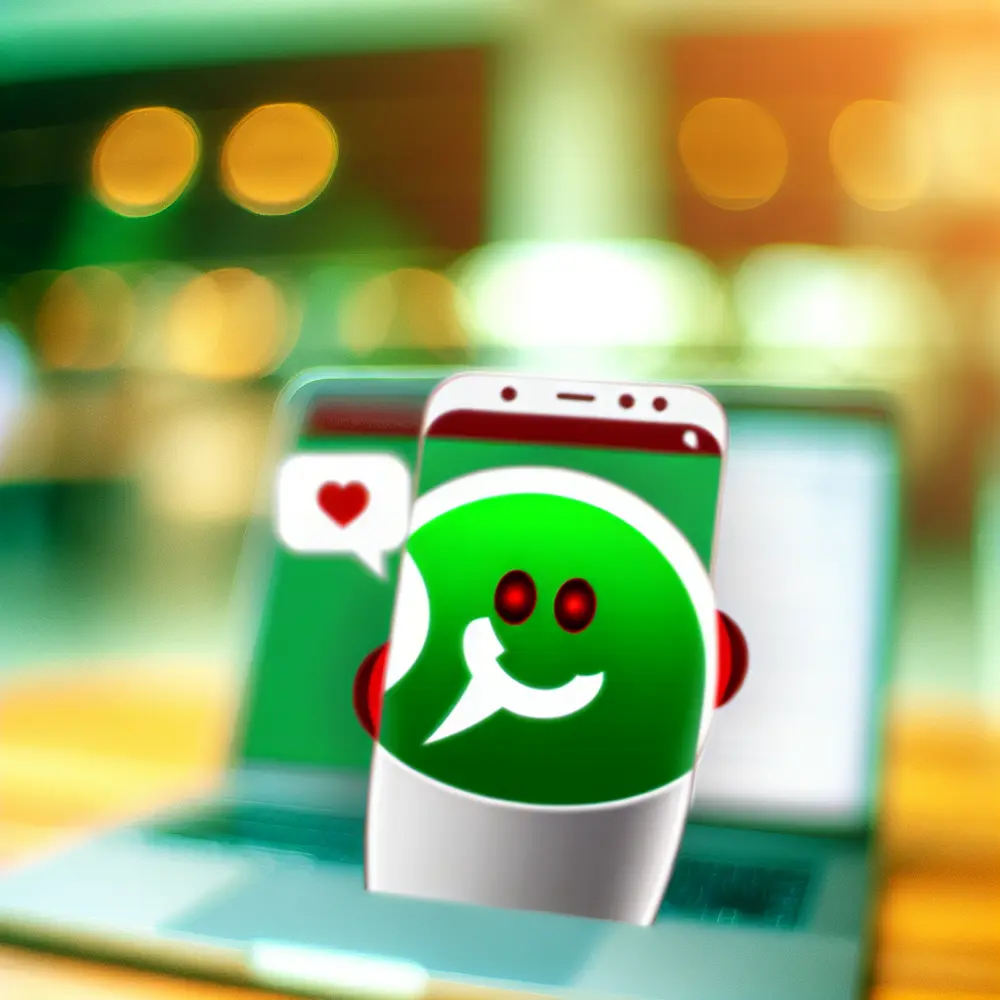As technology continues to evolve, chatbots have risen to prominence as invaluable tools for businesses looking to enhance customer interactions and streamline communication. These automated software applications leverage artificial intelligence to simulate human conversation, making them a go-to solution for engaging with customers across multiple platforms. Among these, WhatsApp stands out as a pivotal channel for deploying chatbots, offering unprecedented accessibility and efficiency in direct customer engagement.
Understanding how chatbots operate is essential for any business looking to integrate this technology into their customer service strategy. Utilizing advanced natural language processing (NLP) techniques, chatbots can process user inputs and understand the intent behind queries, enabling them to provide quick and relevant responses. This capability not only shortens wait times but also significantly boosts user experience—an essential advantage in today’s fast-paced business environment.
Furthermore, chatbots can be programmed to handle a multitude of tasks, ranging from responding to frequently asked questions to facilitating transactions and scheduling. By effectively managing simple inquiries, businesses can allocate their human resources more efficiently, concentrating staff efforts on more complex issues. This operational efficiency translates to improved service quality and heightened customer satisfaction, making chatbots an indispensable asset in competitive industries.
How Chatbots Work
Chatbots have the transformative potential to redefine customer service through automation. At their core, these digital assistants are designed to process user inputs—typically in the form of text messages—utilizing sophisticated natural language processing (NLP) algorithms. This technology empowers chatbots to decipher user intents accurately and respond contextually. For instance, when a customer inquires about product availability, a chatbot can quickly pull relevant data from its database to deliver an effective answer, thereby mitigating delays and enriching the user experience.
Additionally, chatbots are versatile tools capable of handling a variety of tasks. From addressing common questions to executing transactions, they can also escalate complex issues to human agents when appropriate. This hybrid model ensures that customer inquiries receive the attention they require while optimizing the engagement capacity of human staff. In a world where customer expectations are steadily increasing, chatbots provide an avenue for businesses to meet demands without compromising service quality.
The deployment of chatbots yields substantial improvements in operational efficiency. By automating routine inquiries and processes, businesses can liberate their employees to focus on strategic tasks, ultimately enhancing productivity levels. Moreover, chatbots gather valuable data on customer behaviors, fueling insights that can shape marketing strategies and drive sales growth. Small and medium enterprises stand to benefit significantly, as chatbots afford them access to a level of customer service capabilities that were once reserved for larger organizations.
In summary, understanding the mechanics of chatbot technology equips businesses to harness its full potential. From reducing wait times to enhancing user satisfaction, the implementation of chatbots can revolutionize customer interaction. As the landscape continues to evolve, investing in advanced chatbot solutions becomes not just advantageous but essential for businesses keen on maintaining a competitive edge.
Why Use WhatsApp for Chatbots?
WhatsApp has rapidly emerged as a leading platform for businesses aiming to harness the power of chatbots, and several compelling advantages underscore this trend. To begin, WhatsApp boasts over 2 billion active users, offering businesses an expansive audience to connect with. The app’s user-friendly nature and familiarity among consumers facilitate seamless interactions, allowing customers to engage with automated services without experiencing a steep learning curve.
A notable benefit of deploying chatbots on WhatsApp is the capacity for real-time responses to customer inquiries. In an era where satisfaction hinges on timely support, this capability is essential. For small and medium enterprises, implementing a WhatsApp chatbot reduces the burden on human agents by managing inquiries efficiently while diverting attention towards more complex issues. This efficiency not only results in cost savings but also fosters stronger customer relationships.
Furthermore, chatbots on WhatsApp can be easily integrated with existing customer relationship management (CRM) systems and business tools. This compatibility streamlines data collection processes and automates the logging of customer interactions, which is vital for maintaining accurate records and improving service delivery. The capacity to analyze user interactions empowers businesses to fine-tune chatbot functionalities to better cater to customer preferences and needs.
The direct engagement afforded by WhatsApp chatbots also serves to bolster marketing and sales initiatives. Businesses can leverage chatbots to deliver personalized promotions, lead generation efforts, and valuable content directly to user inboxes. This direct line of communication not only deepens relationships with both potential and existing customers but also positions chatbots as powerful tools that facilitate engagement and service excellence in an increasingly digital landscape.
ChatGPT: A Game Changer for Chatbots
ChatGPT represents a revolutionary advancement in artificial intelligence technology, offering a natural conversational interface that enhances interactions between businesses and customers. As chatbots gain traction on platforms like WhatsApp, ChatGPT emerges as a formidable solution for enriching their capabilities. By integrating ChatGPT as the brain behind a chatbot, small and medium-sized enterprises can markedly enhance customer experience, providing instantaneous support while efficiently addressing common inquiries.
One of the standout features of chatbots powered by ChatGPT is their capability to grasp and interpret the nuances of natural language. This proficiency leads to more precise and contextually relevant responses, which can greatly enhance user interaction while alleviating frustrations caused by overly simplistic automated replies. An effective chatbot can learn from each engagement, adjusting its responses to meet user needs, which is crucial for nurturing business relationships in a competitive marketplace.
Moreover, incorporating ChatGPT into chatbots can significantly transform businesses’ marketing and sales strategies. Through automated, personalized interactions, businesses can guide customers throughout the buying journey, from initial awareness to final decisions. This streamlined engagement not only boosts conversion rates but also increases customer loyalty, as users appreciate the individualized attention and real-time assistance they receive. The flexibility of ChatGPT to seamlessly integrate with CRM systems and automation tools strengthens these strategies by providing comprehensive insights into customer behavior and preferences.
For those small and medium businesses eager to explore the power of chatbots, ChatGPT offers a complete roadmap on functionality and best practices. With a structured tutorial on developing an effective chatbot tailored to communication style and customer needs, businesses can harness this sophisticated conversational technology. In today’s landscape where exceptional customer service is a competitive advantage, investing in advanced chatbot capabilities like those offered by ChatGPT becomes a strategic move, promising positive outcomes in engagement, conversion, and overall customer satisfaction.
Building a Chatbot for WhatsApp: A Step-by-Step Guide
To create a powerful chatbot for WhatsApp utilizing ChatGPT, follow this detailed step-by-step guide specifically designed for small and medium businesses, as well as marketing and sales professionals. This tutorial aims to harness the potential of chatbots to enhance customer engagement and streamline business processes effectively.
The initial step in building your chatbot involves setting up a WhatsApp Business account. Start by downloading the WhatsApp Business app, where you will configure your profile with essential business details, including name, description, and operating hours. After establishing your profile, it is crucial to integrate a chatbot platform that supports ChatGPT. Options like Dialogflow and ManyChat provide user-friendly interfaces, enabling the creation of advanced functionalities without requiring extensive coding experience.
Next, you’ll connect your chosen chatbot platform to WhatsApp Business. This typically requires applying for Business API access through Facebook, which permits your chatbot to send and receive messages on WhatsApp. Adhering to the guidelines provided by the platform’s website will ensure proper API usage. Once access is granted, conduct tests to verify that your chatbot communicates effectively on the WhatsApp platform.
Following integration, it’s pivotal to design the conversation flow. Utilize ChatGPT’s capabilities to create responses for common FAQs, greetings, and customer inquiries. This stage highlights the chatbot’s intelligence; by managing multiple queries simultaneously, it can deliver instant feedback and enhance the user experience. It’s wise to include fallback responses to guide users back to relevant topics or escalate inquiries to human agents when needed.
Finally, thorough testing is crucial for refining your chatbot’s performance. Simulate various user interactions to identify potential pitfalls or improvements. Once confident in its functionality, launch your chatbot and include it prominently in marketing strategies. Encourage customer interactions, solicit feedback for continuous enhancements, and monitor analytics to assess effectiveness. By following these steps, you will construct a robust WhatsApp chatbot that significantly boosts customer engagement while supporting your business objectives efficiently.
Best Practices for Chatbot Optimization
To maximize the efficacy of conversations and customer support through chatbots—particularly on messaging platforms like WhatsApp—companies must adopt a set of best practices aimed at improving user experience and operational efficiency. The foremost step is defining explicit objectives for the chatbot’s functionality. Whether the goal is to assist with customer inquiries, facilitate bookings, or provide product information, having a focused direction guides the conversational flow development.
Creating an intuitive, user-friendly conversation flow is vital to keeping users engaged. Mapping out potential customer journeys and designing the bot’s responses accordingly enhances user satisfaction. By leveraging natural language processing capabilities, chatbots can better understand user intents and deliver relevant answers. Ensuring conversational interactions feel natural promotes positive experiences, leading to higher conversion rates.
Another integral best practice involves incorporating fallback mechanisms. Despite advances in chatbot technology, certain inquiries may arise that surpass the bot’s programmed capabilities. Implementing fallback options—such as redirecting users to human agents—can thwart customer frustration, ensuring every inquiry receives adequate attention. The interplay of automated responses and human support contributes to a seamless customer experience.
Regularly reviewing and analyzing chatbot performance metrics is vital for ongoing improvement. By monitoring user interactions, businesses can pinpoint common concerns and adjust the bot’s responses accordingly. Feedback and analytics utilization fosters continuous enhancement, allowing the chatbot to evolve in tandem with customer expectations. Additionally, updating the chatbot with new FAQs and information ensures it remains a valuable resource for users.
Integrating these best practices into the deployment of WhatsApp chatbots can substantially augment conversational quality and enhance customer satisfaction. By prioritizing user engagement, implementing effective fallback strategies, and continually refining chatbot capabilities, small and medium businesses may fully harness the potential of chatbots to streamline customer interactions and thrive in the digital communication arena.
Real-World Examples of Chatbots in Action
Numerous small and medium businesses have successfully embraced the integration of chatbots on WhatsApp, showcasing this powerful tool’s capacity to enhance customer engagement and streamline operations. One remarkable case is that of a local restaurant implementing a chatbot for order inquiries and reservations. Automating responses to frequently asked questions not only expedited response times but also freed staff to focus on in-house customer service. This efficiency surge directly correlated with improved customer satisfaction and increased repeat visits.
Another compelling example comes from a retail brand employing chatbots for personalized marketing via WhatsApp. By integrating their loyalty program with the chatbot, they successfully sent tailored messages and exclusive promotions to customers based on individual purchasing behavior. This strategy not only increased interaction rates but also boosted sales, demonstrating how chatbots can create personalized experiences that resonate with customers and enhance brand loyalty.
A further case study features a small e-commerce business that integrated a chatbot into their WhatsApp strategy to manage order and delivery updates. Through proactive communication, customers received automatic notifications regarding their order status, shipment tracking, and delivery notifications. This approach kept customers informed and alleviated anxiety about purchases, resulting in a more positive shopping experience and minimizing the workload for their customer service team.
In the health sector, a small clinic adopted chatbots to streamline appointment scheduling and patient follow-ups. Patients could easily book appointments via WhatsApp, receive reminders, and access pre-consultation questionnaires. This operational efficiency improved patient flow and overall experience, as patients appreciated the convenience and personal touch. Such cases illustrate how chatbots serve as essential assets for enhancing operational efficiency, actively engaging customers, and elevating satisfaction across various business sectors.
Challenges of Implementing Chatbots
Implementing chatbots in messaging apps like WhatsApp introduces various challenges; however, recognizing and addressing these obstacles can help small and medium businesses navigate the integration process smoothly. One prevalent challenge is the initial setup and configuration. Many users find the technical aspects intimidating, which can lead to inadequate performance. To circumvent this, businesses should invest in comprehensive guides that break down the setup into manageable steps. Selecting platforms with user-friendly interfaces and templates can also simplify the initial stages, ensuring that the chatbot aligns with user needs without requiring extensive coding experience.
Another common issue is ensuring the chatbot understands and responds effectively to user inquiries. Insufficient training data may lead to misunderstandings and frustrating user experiences. Organizations should dedicate effort to curating a comprehensive dataset covering potential queries and dialogues. Continuous learning is crucial; regularly updating the chatbot with new data and refining its algorithms based on customer feedback can significantly boost performance. Additionally, implementing fallback mechanisms—allowing the bot to escalate queries to human agents—ensures customer satisfaction remains a priority.
Integrating chatbots with existing systems presents another hurdle. Many businesses rely on diverse management tools, including customer relationship management (CRM) software and inventory systems. Ensuring seamless connectivity between the chatbot and these tools is pivotal for delivering accurate information and enhancing service delivery. Effective utilization of APIs promotes these integrations. Collaborating with technology solution providers specializing in chatbot integration can facilitate this process and alleviate disruptions.
Finally, measuring chatbot effectiveness can pose complexities. Without robust analytics, businesses may struggle to assess performance metrics such as conversion rates, customer satisfaction, and response times. Establishing clear KPIs before deployment can guide evaluation efforts. Continuous monitoring of chatbot interactions and performance reports will allow organizations to spot areas needing improvement and optimize efficiency. By confronting these common challenges head-on, small and medium businesses can successfully implement chatbots, unleashing their potential to enrich customer engagement and drive sales through automated messaging solutions.
The Future of Chatbots
The future of chatbots is marked by rapid advancements and innovations that redefine how businesses engage with customers. From basic automated responders, chatbots are evolving into sophisticated conversational agents powered by artificial intelligence. This trend is especially significant for small and medium businesses (SMBs) eager to bolster customer service and optimize operations.
One major trend is the integration of chatbots with messaging applications, particularly WhatsApp. As more businesses recognize the value of leveraging popular communication platforms, chatbots’ ability to provide seamless customer experiences in these environments becomes even more critical. This integration enables businesses to offer real-time support, respond to inquiries, and engage consumers precisely where they are most present, thereby significantly enhancing user experience and satisfaction.
Another important trend is the ongoing refinement of natural language processing (NLP) technologies. As time progresses, chatbot responses continue to grow increasingly human-like, facilitating more natural conversations. This improvement stems from machine learning algorithms that allow chatbots to learn from past interactions, enhancing their understanding of context and intent. SMBs can capitalize on these advancements to deploy chatbots that deliver personalized interactions, attending to distinct customer needs informed by previous engagements.
Additionally, the use of chatbots is expanding beyond traditional customer service roles into realms of marketing and sales. Emerging trends indicate that businesses employ chatbots for proactive engagement, such as sending customized promotions or reminders to customers who have abandoned shopping carts. This proactive approach not only strengthens customer relationships but also raises sales conversion rates. Analyzing user data and preferences enables businesses to refine their marketing strategies, making chatbots indispensable assets within digital marketing frameworks.
Finally, innovations in analytics and reporting are poised to transform businesses’ perspectives on chatbot interactions. Data gathered over chatbot conversations can unveil valuable insights into customer behavior and preferences, enabling firms to make informed decisions. As these capabilities expand, chatbots will evolve from merely acting as initial customer engagement tools to vital components in strategic planning and customer relationship management. By staying attuned to these trends and innovations, small and medium businesses can position themselves favorably for success in an increasingly competitive landscape.
In conclusion, chatbots have revolutionized customer service, particularly through platforms like WhatsApp. They facilitate instant communication, allowing businesses to promptly respond to customer inquiries—a critical requirement in today’s fast-paced environment. By deploying chatbots powered by ChatGPT, small and medium businesses can significantly enhance customer engagement while reducing operational costs. This innovative approach simplifies communication while enabling companies to manage higher inquiry volumes without overburdening their support teams.
One of the standout benefits of utilizing chatbots in customer service is their capacity for 24/7 availability. Customers can receive assistance regardless of the time, addressing the growing demand for immediate responses. Chatbots efficiently handle repetitive inquiries, allowing human agents to concentrate on complex issues needing a personal touch. With a thorough guide on implementing a WhatsApp chatbot, businesses can streamline their support operations, ensuring that customers always have access to necessary assistance.
The versatility of chatbots also extends to completing transactions, booking appointments, and providing tailored product recommendations. By analyzing customer interaction data, chatbots can learn and adapt, resulting in an overall improved customer experience. This adaptability ensures that the more customers engage with the chatbot, the more proficient it becomes at furnishing relevant information, making it a highly valuable asset for marketing and sales professionals aiming to drive engagement and conversion.
In summary, the transformation facilitated by chatbots in customer service is profound. For small and medium businesses, adopting this technology is no longer a simple choice but a strategic necessity. By offering a seamless, efficient method for customer interaction, chatbots not only elevate user experience but also positively influence brand loyalty and revenue growth. As businesses continue to identify new avenues for engagement through messaging apps, integrating chatbots into their service strategies becomes critical for maintaining a competitive edge in the evolving market landscape.









